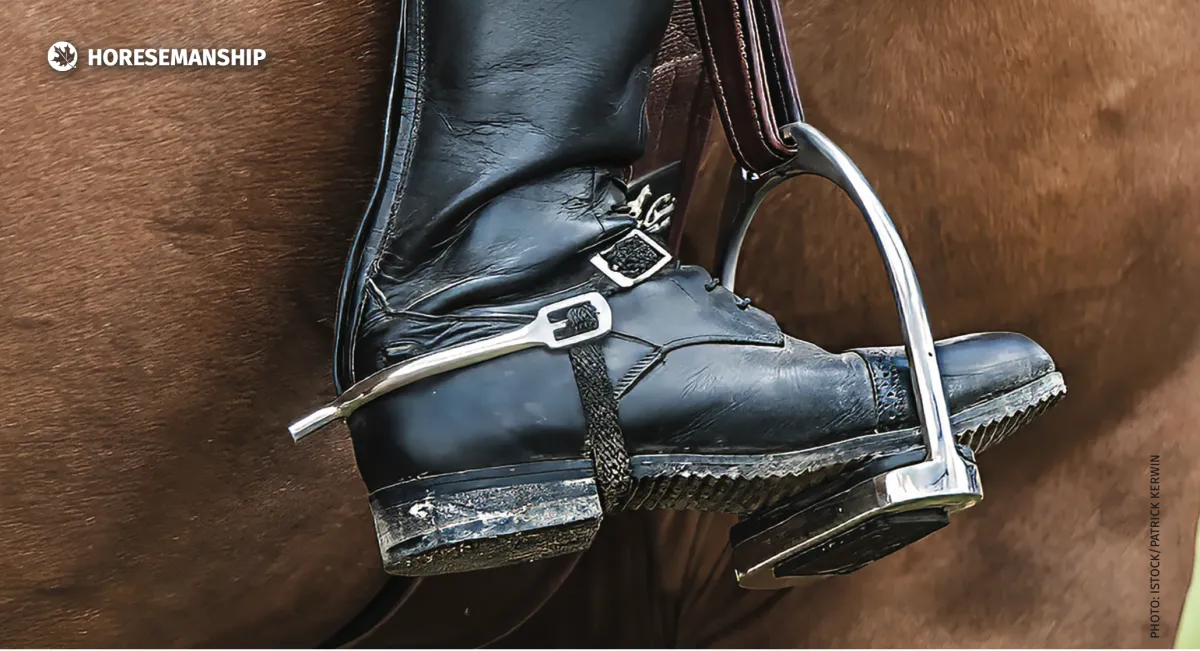
Earning Your Spurs

Earning Your Spurs, And Using Them Wisely
Most riders who’ve “earned” their spurs can share a few stories about the lessons that came with them, sometimes even scars or reminders of misuse. Whether spurs are good or bad tools depends less on the metal itself and more on how, when, and why we use them.
Spurs were never meant to be part of a rider’s daily outfit. They’re a refinement tool, one that should enhance communication, not replace it.
Understanding the Role of Spurs
Across disciplines, spurs have different purposes.
In English riding, they’re used to energize. To quicken a horse’s response to leg aids or add expression and engagement to a gait. A dressage rider, for example, might use a flick of the spur to ask for more hind leg activity or greater impulsion.
In Western riding, the use is more shaping, guiding body carriage, direction, and flexibility. A Western rider might slide or rhythmically touch the spur to encourage the horse to lift its back, flex its ribcage, or tuck its pelvis.
Understanding these variations is key. A rider hopping from one discipline to another without awareness of these differences can easily confuse the horse. Spurs mean different things depending on the training tradition behind them.
When (and When Not) to Wear Spurs
Before strapping them on, it’s worth asking:
What does my horse already understand about spurs?
And even more importantly, What am I hoping to communicate today?
Spurs shouldn’t be used for everything: speed, posture, or maneuverability. If your real goal is clearer communication, they’re a tool for precision, not control.
Research underscores the importance of restraint. Studies have shown that excessive spurring elevates horses’ cortisol levels, increasing stress. Yet when used judiciously and thoughtfully, spurs don’t necessarily harm welfare. Like most tools, they’re neutral; it’s our intent and timing that define their impact.
A Little History
Spurs have a long history, dating back to the 5th century BC. By the Middle Ages, they had evolved from simple thorns into bronze and bone, later becoming symbols of knighthood. Knights were ceremoniously “girded with spurs” as a mark of honor and mastery.
As horsemanship evolved, so did spur design. Spanish Vaqueros popularized roweled spurs — the style most familiar today — which allowed subtler rolling contact instead of jabbing. Spurs became not just symbols of status, but of skill.
Precision Over Pressure
In clinics, I sometimes meet riders who proudly avoid spurs, hoping to be as kind as possible. Yet these same riders often fall into constant leg nagging, squeezing or bumping repeatedly just to get a response. In those cases, a well-timed, thoughtful touch of a spur might actually be kinder than endless noise from the leg.
Used correctly, spurs allow a rider to be quieter, not harsher.
Design plays a role, too. Long shanks and sharp rowels increase severity, while short or blunt designs soften contact. More points on a rowel reduce intensity by rolling smoothly over the skin rather than poking it.
A Matter of Feel
Even the most humane spur can do harm in unsteady hands. Overuse can damage the horse’s fascia, leading to adhesions, discomfort, and restricted movement. True horsemanship means knowing when not to add more pressure.
Before you buckle on your spurs, pause to ask:
What am I trying to achieve today?
Do I truly need this extra refinement?
Is my leg quiet, steady, and timed well enough to use them fairly?
If the answer to any of these is no, the kindest choice might be to leave them in your tack trunk - until you’ve earned them again.
About Jec Ballou
Jec A. Ballou is a lifelong horsewoman, clinician, and author who helps riders improve their horses’ athleticism through correct movement and gymnastic training. Her teaching blends classical principles, biomechanics, and compassionate horsemanship.